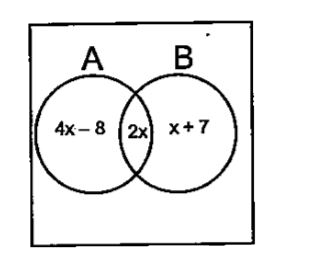(a) If Nk={kn:n∈N}, find N3∩N5andN4∩N6.
(b) If Na=(an:n∈N}, describe N4∩N6andN3∩N5.
The correct Answer is:(a) N15andN12
(b) N12,N15.
To solve the given problem, we need to find the intersections of specific sets defined by multiples of natural numbers.
Part (a)
1. Define the sets:
- N3={3n:n∈N}
- N5={5n:n∈N}
- N4={4n:n∈N}
- N6={6n:n∈N}
2. List the elements of each set:
- N3={3,6,9,12,15,18,21,24,27,30,33,…}
- N5={5,10,15,20,25,30,35,…}
- N4={4,8,12,16,20,24,28,32,…}
- N6={6,12,18,24,30,36,…}
3. Find N3∩N5:
- The common elements in N3 and N5 are the multiples of 15.
- N3∩N5={15,30,45,60,…}=N15
4. Find N4∩N6:
- The common elements in N4 and N6 are the multiples of 12.
- N4∩N6={12,24,36,48,…}=N12
Summary for Part (a):
- N3∩N5=N15
- N4∩N6=N12
---
Part (b)
1. Define the general form:
- Na={an:n∈N}
2. Find N4∩N6:
- Since N4={4n:n∈N} and N6={6n:n∈N}, the intersection will still yield multiples of 12.
- Thus, N4∩N6=N12.
3. Find N3∩N5:
- Similarly, N3={3n:n∈N} and N5={5n:n∈N} will yield multiples of 15.
- Thus, N3∩N5=N15.
Summary for Part (b):
- N4∩N6=N12
- N3∩N5=N15
---
- N3={3n:n∈N}
- N5={5n:n∈N}
- N4={4n:n∈N}
- N6={6n:n∈N}
- N3={3,6,9,12,15,18,21,24,27,30,33,…}
- N5={5,10,15,20,25,30,35,…}
- N4={4,8,12,16,20,24,28,32,…}
- N6={6,12,18,24,30,36,…}
- The common elements in N3 and N5 are the multiples of 15.
- N3∩N5={15,30,45,60,…}=N15
- The common elements in N4 and N6 are the multiples of 12.
- N4∩N6={12,24,36,48,…}=N12
- N3∩N5=N15
- N4∩N6=N12
- Na={an:n∈N}
- Since N4={4n:n∈N} and N6={6n:n∈N}, the intersection will still yield multiples of 12.
- Thus, N4∩N6=N12.
- Similarly, N3={3n:n∈N} and N5={5n:n∈N} will yield multiples of 15.
- Thus, N3∩N5=N15.
- N4∩N6=N12
- N3∩N5=N15
Topper's Solved these Questions
- SETS BOOK - MODERN PUBLICATIONCHAPTER - SETS EXERCISE - EXERCISE 1 (e ) (Short Answer Type Questions)
7 Videos
- SETS BOOK - MODERN PUBLICATIONCHAPTER - SETS EXERCISE - EXERCISE 1 (e ) (Long Answer Type Questions - I)
13 Videos
- SETS BOOK - MODERN PUBLICATIONCHAPTER - SETS EXERCISE - EXERCISE 1 (c ) (Short Answer Type Questions)
13 Videos
- SEQUENCES AND SERIESBOOK - MODERN PUBLICATIONCHAPTER - SEQUENCES AND SERIESEXERCISE - CHAPTER TEST
12 Videos
- STATISTICSBOOK - MODERN PUBLICATIONCHAPTER - STATISTICSEXERCISE - Chapter Test
7 Videos
Similar Questions
Knowledge Check
If Na={ax∣x∈N}, then what is N12∩N8 equal to?
AN12BN20CN24DN48
If In=∫(sinx)ndx,n∈N, then 5I4−6I6 is equal to
View SolutionIf n(A)=20,n(B)=8andn(A∪B)=28, find n(A∩B).
View SolutionIf nC4,nC5andnC6 are in AP, then n is
View SolutionFind n if ^(n)P6=3.nP5
View SolutionFind the value of : (1+i)n,n∈N
View Solution(i) If (n+1)P5 : nP6=2:7, find n
(ii) If n+1P5 : nP5=3:2 ,find n.
View SolutionWrite the set A={an:n∈N,an+2=3an,a1=1} in tabular form.
View Solution

